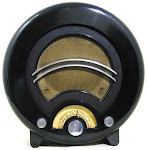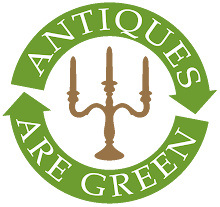I'm sure many of you will have seen what you think is a West German ceramic, which then turns out to be Austrian - with the word AUSTRIA moulded on the base. I have been keeping my eye on these to try and work out who made them. Earlier this week I bought a nice Carstens baluster vase, decorated with a circular variant of Carstens' 'Ankara' pattern. It's quite a complex glaze combination and pattern, so I was amazed to see that the base was in fact moulded 'AUSTRIA'. So, did an Austrian company copy this glaze, and effectively 'rip it off', or did Carstens license the pattern to another factory? I think neither, and that all (or the majority of) Austrian ceramics that look like West German ceramics were made by Carstens in Germany. It's known that Carstens had a sales office or branch in Austria (as well as Australia, Brasil and even Chile!), and it may have been easier to export their wares to certain countries if they were not marked 'Germany' - after all in 1960, the war had only ended 15 years before. Not only that, but they would also appeal to to the Austrians themselves who, surprisingly, refer to their country frequenty as 'Austria' and not always 'Östereich'. M.P. Thomas also says that between 1953 and 1959, Carstens produced ceramics under the notable Austrian name 'Goldscheider', when that company moved to Fredeslöh in Germany, where Carstens was based.
So I called my friend and fellow collector Dr Graham Cooley with my hypothesis, and he confirmed that of the Austrian vases in his collection, all were in Carstens shapes and glazes. Not only that, but I had a call from him yesterday evening when he told me that he had just found a West German type vase marked 'AUSTRIA' with a foil label bearing the name 'Keramos' followed by the wording 'Carstens Qualitat' - which means 'Carstens Quality'. So, I think this goes to prove my hypothesis that many West German type vases marked 'AUSTRIA' were in fact made by Carstens in Germany. Interesting, huh?
yesterday evening when he told me that he had just found a West German type vase marked 'AUSTRIA' with a foil label bearing the name 'Keramos' followed by the wording 'Carstens Qualitat' - which means 'Carstens Quality'. So, I think this goes to prove my hypothesis that many West German type vases marked 'AUSTRIA' were in fact made by Carstens in Germany. Interesting, huh?
So I called my friend and fellow collector Dr Graham Cooley with my hypothesis, and he confirmed that of the Austrian vases in his collection, all were in Carstens shapes and glazes. Not only that, but I had a call from him
 yesterday evening when he told me that he had just found a West German type vase marked 'AUSTRIA' with a foil label bearing the name 'Keramos' followed by the wording 'Carstens Qualitat' - which means 'Carstens Quality'. So, I think this goes to prove my hypothesis that many West German type vases marked 'AUSTRIA' were in fact made by Carstens in Germany. Interesting, huh?
yesterday evening when he told me that he had just found a West German type vase marked 'AUSTRIA' with a foil label bearing the name 'Keramos' followed by the wording 'Carstens Qualitat' - which means 'Carstens Quality'. So, I think this goes to prove my hypothesis that many West German type vases marked 'AUSTRIA' were in fact made by Carstens in Germany. Interesting, huh? 



.png)